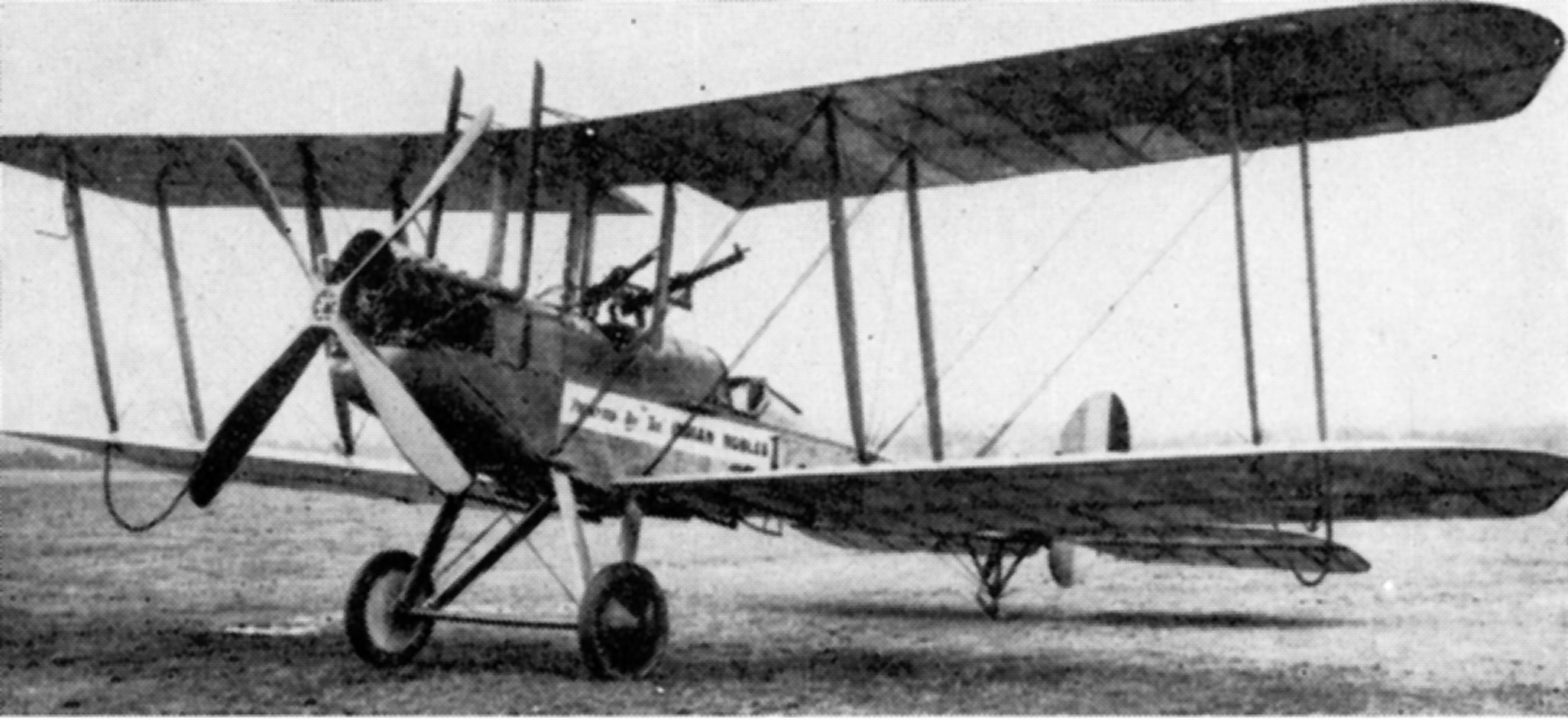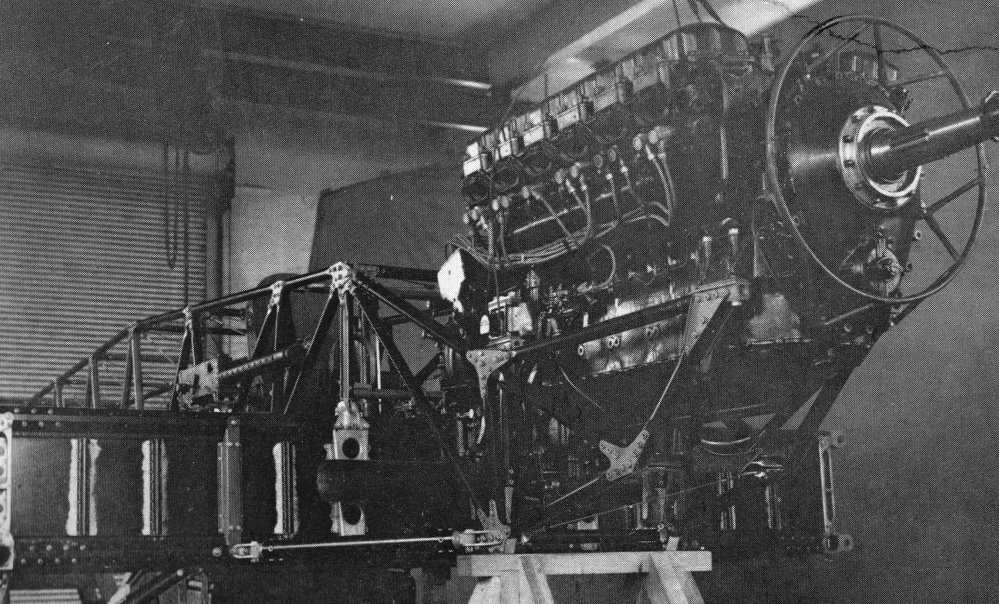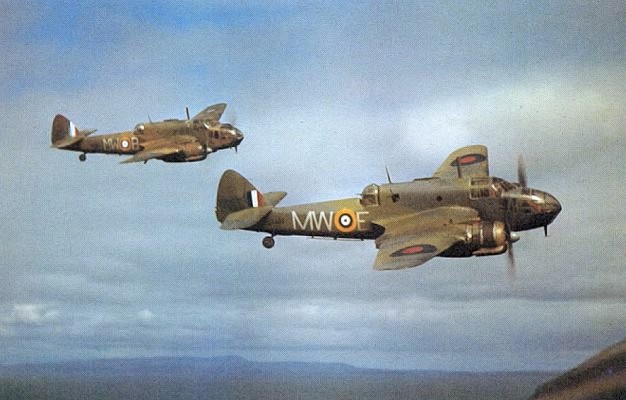|
Turbinlite
The Helmore/ GEC Turbinlite was a 2,700 million candela (2.7 Gcd) searchlight fitted in the nose of a number of British Douglas Havoc night fighters during the early part of the Second World War and around the time of The Blitz. The Havoc was guided to enemy aircraft by ground radar and its own radar. The searchlight would then be used to illuminate attacking enemy bombers for defending fighters accompanying the Havoc to shoot down. In practice the Turbinlite was not a success, and the introduction of higher performance night fighters with their own radar meant they were withdrawn from service in early 1943. Background The then-state-of-the-art metre-wavelength aircraft interception (AI) radar was bulky and, due to the operator workload, generally unsuited to carriage by single-engined fighters — and so required a twin-engine design. However, the early radar-equipped Bristol Blenheims lacked the necessary speed advantage over the German Heinkel He 111s and Dornier ... [...More Info...] [...Related Items...] OR: [Wikipedia] [Google] [Baidu] |
Douglas A-20 Havoc
The Douglas A-20 Havoc (company designation DB-7) is an American light bomber, attack aircraft, Intruder (air combat), night intruder, night fighter, and reconnaissance aircraft of World War II. Designed to meet an Army Air Corps requirement for a bomber, it was ordered by France for their air force before the USAAC decided it would also meet their requirements. French DB-7s were the first to see combat; after the fall of France, the bomber served with the Royal Air Force under the British military aircraft designation systems#Names, service name Boston. From 1941, night fighter and Intruder (air combat), intruder versions were given the service name Havoc. In 1942 USAAF A-20s saw combat in North Africa. It served with several Allies of World War II, Allied air forces, principally the United States Army Air Forces (USAAF), the Soviet Air Forces (''VVS''), Soviet Naval Aviation (''AVMF''), and the Royal Air Force (RAF) of the United Kingdom. A total of 7,478 aircraft were built, o ... [...More Info...] [...Related Items...] OR: [Wikipedia] [Google] [Baidu] |
Searchlight
A searchlight (or spotlight) is an apparatus that combines an extremely luminosity, bright source (traditionally a carbon arc lamp) with a mirrored parabolic reflector to project a powerful beam of light of approximately parallel rays in a particular direction. It is usually constructed so that it can be swiveled about. The most common element used in modern searchlights is Xenon, Xenon (Xe). However, Rare-earth elements such as lanthanum, lanthanum (La) and cerium, cerium (Ce) are used in phosphors to improve light quality in some specialized searchlights. Military use The first use of searchlights using carbon arc technology occurred during the Siege of Paris (1870-71), Siege of Paris during the Franco-Prussian War. The Royal Navy used searchlights in 1882 to dazzle and prevent Egyptian forces from manning artillery batteries at Bombardment of Alexandria, Alexandria. Later that same year, the French and British forces landed troops under searchlights. By 1907 the value o ... [...More Info...] [...Related Items...] OR: [Wikipedia] [Google] [Baidu] |
Night Fighter
A night fighter (later known as all-weather fighter or all-weather interceptor post-Second World War) is a largely historical term for a fighter aircraft, fighter or interceptor aircraft adapted or designed for effective use at night, during periods of adverse meteorological conditions, or in otherwise poor visibility. Such designs were in direct contrast to day fighter, day fighters: fighters and interceptors designed primarily for use during the day or during good weather. The concept of the night fighter was developed and experimented with during the First World War but would not see widespread use until WWII. The term would be supplanted by “all-weather fighter/interceptor” post-WWII, with advancements in various technologies permitting the use of such aircraft in virtually all conditions. During the Second World War, night fighters were either purpose-built night fighter designs, or more commonly, heavy fighters or light bombers adapted for the mission, often employing ... [...More Info...] [...Related Items...] OR: [Wikipedia] [Google] [Baidu] |
AI Mark IV Radar
Radar, Aircraft Interception, Mark IV (AI Mk. IV), also produced in the USA as SCR-540, was the world's first operational aircraft interception radar, air-to-air radar system. Early Mk. III units appeared in July 1940 on converted Bristol Blenheim light bombers, while the definitive Mk. IV reached widespread availability on the Bristol Beaufighter heavy fighter by early 1941. On the Beaufighter, the Mk. IV arguably played a role in ending the Blitz, the ''Luftwaffe's'' night bombing campaign of late 1940 and early 1941. Early development was prompted by a 1936 memo from Henry Tizard on the topic of night fighting. The memo was sent to Robert Watson-Watt, director of the radar research efforts, who agreed to allow physicist Edward George Bowen, Edward George "Taffy" Bowen to form a team to study the problem of air interception. The team had a test bed system in flights later that year, but progress was delayed for four years by emergency relocations, three abandoned production ... [...More Info...] [...Related Items...] OR: [Wikipedia] [Google] [Baidu] |
Leigh Light
The Leigh Light (L/L) was a British World War II era anti-submarine device used in the Battle of the Atlantic. It was a powerful (22 million candelas) carbon arc searchlight of diameter fitted to a number of the British Royal Air Force's Coastal Command patrol bombers to help them spot surfaced German U-boats at night. Early night operations with the new air-to-surface-vessel (ASV) radar demonstrated that the radar's minimum range of about meant that the target was still invisible when it disappeared off the radar display. Efforts to reduce this minimum were not successful, so Wing Commander Humphrey de Verd Leigh hit upon the idea of using a searchlight that would be switched on just when the target was about to disappear on radar. The U-boat had insufficient time to dive and the bombardier had a clear view of the target. Introduced in June 1942, it was so successful that for a time German submarines were forced to switch to charging their batteries during the day ... [...More Info...] [...Related Items...] OR: [Wikipedia] [Google] [Baidu] |
William Helmore
Air Commodore William Helmore (1 March 1894 – 18 December 1964) was an engineer and Royal Air Force officer who had a varied and distinguished career in scientific research with the Air Ministry and the Ministry of Aircraft Production during the Second World War, as a broadcaster, and for two years as Member of Parliament for Watford 1943–1945. Early life Helmore was educated at Blundell's School and the Royal Military Academy, Woolwich. He served in the First World War as a Royal Artillery officer and then transferred to the Royal Flying Corps as an observer and pilot. One result of this experience was his book ''Cavalry of the Air''. After the war he went to Christ's College, Cambridge, and obtained a first class (honours) degree in mechanical sciences. Post WWI In 1922, Helmore was granted a permanent commission as a flight lieutenant in the Royal Air Force and developed his interest in scientific research in aviation. He was also involved in the development of aerial re ... [...More Info...] [...Related Items...] OR: [Wikipedia] [Google] [Baidu] |
Sidney Cotton
Frederick Sidney Cotton (17 June 1894 – 13 February 1969) was an Australian inventor, photographer and aviation and photography pioneer, responsible for developing and promoting an early colour film process, and largely responsible for the development of photographic reconnaissance before and during World War II. He numbered among his close friends George Eastman, Ian Fleming and Winston Churchill. Early years Frederick Sidney Cotton was born on 17 June 1894 on a cattle station at Goorganga, near Proserpine, Queensland. He was the third child of Alfred and Annie Cotton, who were involved in pastoralism. Cotton was educated at The Southport School in Queensland. In 1910, he and his family went to England, where he attended Cheltenham College; however the family returned to Australia in 1912. Cotton worked as a jackeroo, training to work with livestock at stations in New South Wales up until the outbreak of war. First World War On 4 August 1914, Britain declared war on ... [...More Info...] [...Related Items...] OR: [Wikipedia] [Google] [Baidu] |
Hawker Hurricane
The Hawker Hurricane is a British single-seat fighter aircraft of the 1930s–40s which was designed and predominantly built by Hawker Aircraft Ltd. for service with the Royal Air Force (RAF). It was overshadowed in the public consciousness by the Supermarine Spitfire during the Battle of Britain in 1940, but the Hurricane inflicted 60% of the losses sustained by the ''Luftwaffe'' in the campaign, and fought in all the major theatres of the Second World War. The Hurricane originated from discussions between RAF officials and aircraft designer Sir Sydney Camm about a proposed monoplane derivative of the Hawker Fury biplane in the early 1930s. Despite an institutional preference for biplanes and lack of interest by the Air Ministry, Hawker refined its monoplane proposal, incorporating several innovations which became critical to wartime fighter aircraft, including retractable landing gear and the more powerful Rolls-Royce Merlin engine. The Air Ministry ordered Hawker's ''Interce ... [...More Info...] [...Related Items...] OR: [Wikipedia] [Google] [Baidu] |
Dipole Antenna
In radio and telecommunications a dipole antenna or doublet is one of the two simplest and most widely used antenna types, types of antenna; the other is the monopole antenna, monopole. The dipole is any one of a class of antennas producing a radiation pattern approximating that of an elementary electric dipole with a radiating structure supporting a line current so energized that the current has only one node at each far end. A dipole antenna commonly consists of two identical conductive elements such as metal wires or rods. The driving current from the transmitter is applied, or for receiving antennas the output signal to the radio receiver, receiver is taken, between the two halves of the antenna. Each side of the feedline to the transmitter or receiver is connected to one of the conductors. This contrasts with a monopole antenna, which consists of a single rod or conductor with one side of the feedline connected to it, and the other side connected to some type of g ... [...More Info...] [...Related Items...] OR: [Wikipedia] [Google] [Baidu] |
RAF Burtonwood
Royal Air Force Burtonwood (or RAF Burtonwood) is a former Royal Air Force and United States Army Air Forces base that was located in Burtonwood, Northwest of Warrington in Cheshire, England. The base was opened in 1940 in response to World War II by the RAF and in 1942 it was transferred to the United States of America for war operations. The base was home to 18,000 American servicemen at the end of the war. In 1946 the base was transferred back to the United Kingdom however United States operations continued. The base officially closed in 1991 and since then the runway and most of the associated buildings have been demolished. RAF Burtonwood Heritage Centre was opened on part of the former base and focuses on the lives of the servicemen, the war and the airplanes at the base. Overview Burtonwood airfield was opened on 1 January 1940 as a servicing and storage centre for modifying British aircraft. It was operated by No. 37 Maintenance Unit RAF until June 1942. United S ... [...More Info...] [...Related Items...] OR: [Wikipedia] [Google] [Baidu] |
Bristol Beaufighter
The Bristol Type 156 Beaufighter (often called the Beau) is a British multi-role aircraft developed during the Second World War by the Bristol Aeroplane Company. It was originally conceived as a heavy fighter variant of the Bristol Beaufort torpedo bomber. The Beaufighter proved to be an effective night fighter, which came into service with the Royal Air Force (RAF) during the Battle of Britain, its large size allowing it to carry heavy armament and early aircraft interception radar without major performance penalties. The Beaufighter was used in many roles; receiving the nicknames ''Rockbeau'' for its use as a rocket-armed ground attack aircraft and ''Torbeau'' as a torpedo bomber against Axis shipping, in which it replaced the Beaufort. In later operations, it served mainly as a maritime strike/ground attack aircraft, RAF Coastal Command having operated the largest number of Beaufighters amongst all other commands at one point. The Royal Australian Air Force (RAAF) al ... [...More Info...] [...Related Items...] OR: [Wikipedia] [Google] [Baidu] |
Douglas Havoc II Turbinlite 1459 Flight RAF C1942
Douglas may refer to: People * Douglas (given name) * Douglas (surname) Animals * Douglas (parrot), macaw that starred as the parrot ''Rosalinda'' in Pippi Longstocking * Douglas the camel, a camel in the Confederate Army in the American Civil War Businesses * Douglas Aircraft Company * Douglas (cosmetics), German cosmetics retail chain in Europe * Douglas Holding, former German company * Douglas (motorcycles), British motorcycle manufacturer Peerage and Baronetage * Duke of Douglas * Earl of Douglas, or any holder of the title * Marquess of Douglas, or any holder of the title * Douglas baronets Peoples * Clan Douglas, a Scottish kindred * Dougla people, West Indians of both African and East Indian heritage Places Australia * Douglas, Queensland, a suburb of Townsville * Douglas, Queensland (Toowoomba Region), a locality * Port Douglas, North Queensland, Australia * Shire of Douglas, in northern Queensland Canada * Douglas, New Brunswick * Douglas Parish, New Brunswick ... [...More Info...] [...Related Items...] OR: [Wikipedia] [Google] [Baidu] |









